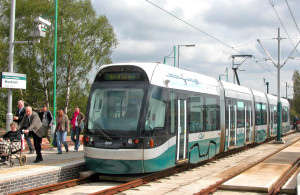It has often been said that Cambridge is too small for an underground or a Light Rail public transport system, and that it would be unaffordable. But is this actually true? On what evidence are these claims based? Are there examples of Light Rail systems serving cities comparable in size to Cambridge, and how successful are they? Cambridge Connect has been looking into these questions, and is posting case studies of Light Rail systems operating in comparable cities on these pages. The case studies below are examples of Light Rail systems operating successfully in cities of comparable size throughout Europe, bringing very positive benefits.
Local resident Gordon Theobald has compiled a number of case studies linked below. These examples demonstrate that light rail is viable and successful in a range of cities of similar type and size to Cambridge throughout Europe:
Lund Case Study
Ghent Case Study
Orléans Case Study
Nottingham Case Study
Odense Case Study
Lausanne Case Study – contributed by Kevin Rathbone
One example of a city with Light Rail and an underground system is Lausanne, Switzerland. Lausanne has a population and land area similar to Cambridge; other comparable aspects include two universities, a teaching hospital, high-tech industry and a wide commuting basin. A key difference, however, is that Lausanne has excellent public transport on a very successful underground metro, with annual ridership of ~41m. The Lausanne Light Rail system (pdf, opens in new window) currently comprises two lines. The network extends ~14 km, of which about half is underground. The 7.8 km, mainly overground, M1 line with 15 stations opened in 1991. The 5.9 km long fully automated, driverless, M2 line opened in 2008 and is mainly underground. It has 14 stations, and the M2 line alone has an annual ridership of ~28m. Patronage of the metro has far exceeded expectations, and as a result of this success the public have voted to build a third line, which is to be opened in 2018.
The metro has transformed public transport in Lausanne, with both bus and tram usage increasing by 10–15% since 2010. The proportion of commuters using public transport in Lausanne is around 40%; compare this to 8% using public transport in Cambridge on slow and unreliable buses.
Read the Lausanne Case Study prepared by Kevin Rathbone for more information about the Lausanne system, and how it compares with Cambridge.
Grenoble Case Study – contributed by Mal Schofield
We welcome your thoughts on other Light Rail systems that might provide useful comparisons.








